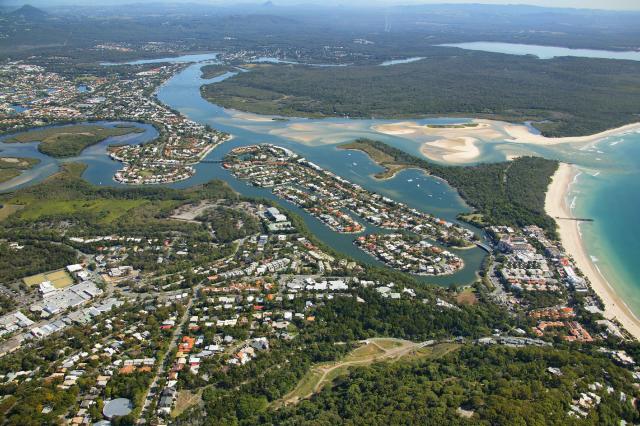Two of Australia’s most intractable issues – the availability and the cost of housing – are also hitting hard in Noosa Shire because of its appeal as a place to live and limited urban footprint.
In the five years to March 2023, house prices in Noosa soared by 129 per cent and units by 180 per cent. Rents grew by 51 per cent.
These increases particularly affect low income workers and vulnerable groups such as single women and people with a disability.
All three levels of governments now admit there is a housing crisis and State governments are beginning to override local planning schemes to get more houses built at affordable prices.
In Queensland there’s a bill before parliament to allow what is termed “state facilitated application“ for delivery of affordable housing, which only the State government will assess. Local councils and other State agencies will be restricted to providing only technical advice.
The implication for councils is that they should update their own policies and rules first or risk being dictated to by the State government.
Noosa Council’s strategic planning staff are ahead of the curve and have already included ways to facilitate affordable housing in proposed amendments to the 2020 Noosa Plan, which were until now completely confidential.
These amendments have been submitted to relevant government departments for a process called State Interest Review and they await a tick by the State government. The long delay in dealing with the amendments is probably due to waiting for the updated South East Queensland Regional Plan which was released just before Christmas.
At the December Council meeting, strategic planning staff tabled an update of the Noosa Housing Strategy. Their report indicated that, given the delay in obtaining State Interest sign off on the planning scheme amendments, public consultation on them will now not occur until after the March 2024 council elections. Noosa Council will go into caretaker mode from 29 January after which decisions on substantive matters are not allowed.
A deep dive into the December staff report gives a sneak preview of what the Council proposes to do to encourage more affordable housing. Inevitably, the proposals will require some compromise to achieve this goal.
As you might expect, Noosa Council is proposing that new residential development in the form of attached housing occur within established urban areas through consolidation and infill rather than outward expansion.
More housing will be built in well serviced neighbourhoods close to employment, schools and transport. It will be seeking a greater diversity of housing including small dwellings, affordable housing, social housing and accessible housing for people with a disability.
Housing for residents, not visitors, will be prioritised in residential zones and short term accommodation will be made inconsistent in medium and high density residential zones. In zones designated as rural or rural residential, visitor accommodation will need to be complementary to and not at the expense of housing.
The extent of the tourist accommodation zone will be reviewed, as will be locations for short term accommodation.
The development of small units will be made more financially feasible, and some old low density public housing will be redeveloped as modern social housing apartments. Incentives and bonuses will also be considered if they are required to stimulate more affordable housing.
Car parking requirements will also be reviewed, and some site layout and design requirements will be removed to reduce the cost of housing, particularly in and adjoining centres well serviced by public transport.
These amendments have not yet been approved by the State Interest Review. They could be varied substantially if the Queensland government believes they do not adequately meet its aspirations for generating more housing, especially low cost housing.
When the government’s response is received, it will be considered by the Council that will be elected in March and then opened for comprehensive public consultation.
If Noosa Council’s proposals do not align sufficiently with the government’s housing aspirations, the Council and the community will have to think again about how to deal with what will be a very significant challenge – where and how to develop more housing, and especially low cost housing.







